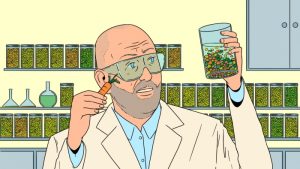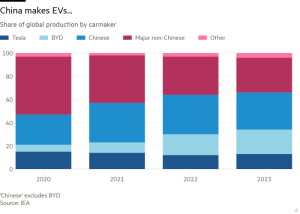Healthcare industry cannot mask its sustainability problem
Unlock the Editor’s Digest for free
Roula Khalaf, Editor of the FT, selects her favourite stories in this weekly newsletter.
The sight of discarded surgical masks clogging up storm drains or lapping in the waves quickly became routine during the Covid-19 pandemic — exposing the hazards of medical waste like never before.
The volume of disposable masks, gloves and other personal protective equipment (PPE) surged during the pandemic — the upshot being that more plastic and other harmful compounds were added to the world’s accumulation of medical waste. Single-use disposable Covid-19 tests, too, added plastic to the waste problem.
Even before the pandemic, healthcare had a waste problem. About 1 to 2 per cent of municipal waste comes from hospitals, labs and pharmacies. And about 15 per cent of healthcare waste is hazardous — meaning it contains needles and infected, or even radioactive, material.
In part because of its plastics use, the healthcare industry is also sizeable contributor to the world’s carbon emissions. It accounts for more than 4 per cent of global CO₂ emissions, according to a 2022 World Economic Forum report. For most rich countries, the total is closer to 10 per cent of national emissions, which is more than the aviation or shipping sectors, WEF says.
“The pandemic showed us that our current model of healthcare delivery is in disarray,” says Caroline Skolnik, a medical doctor at Northwestern University in the US and co-author of a 2022 paper that argues that modern medicine’s “distinctively wasteful” ways are under-appreciated.
The creeping use of plastics in healthcare has contributed to its wastefulness, Skolnik says. Historically, hospitals relied on cloth, glass and other materials that were relatively reusable and not wrapped in plastic.
Now, almost everything is disposable and comes wrapped in plastic and about 80 per cent of carbon emissions from healthcare come from single-use plastics. Relying on single-use supplies is both “financially burdensome [and] environmentally harmful,” she adds.
“There were some hospitals that listened to the pandemic alerting us that our practices need to change,” Skolnik says. But “much more reusable equipment and greater awareness of carbon-reducing healthcare delivery” are required.
According to a report from the Business Research Company, the global market for handling this waste is now expected to grow to $19.7bn in 2024 from $18.8bn last year, and hit $24bn in 2028. “The rise in the use of disposable medical products in healthcare facilities is expected to drive the growth of the medical waste management market,” the report says.
Recycling is expected to become a key trend. “The ongoing medical supplies shortage during the Covid-19 pandemic has resulted in the need for more sustainable recycling of medical products,” the report argues.
In the US, medical waste is mainly regulated by states. The US Environmental Protection Agency oversees technologies that use chemicals to clean medical waste before it is trashed but the end-product still ends up in landfill, the EPA has said.
Before Covid-19, “medical waste was often managed locally, with site administrators bearing the responsibility of contracting and managing service to best meet their needs,” says Chris Ramirez, chief executive of California-based OnSite Waste Technologies.
“The pandemic revealed the shortcomings of this decentralised model,” he warns. But the industry is incorporating more data analytics to help hospitals trim their waste and, Ramirez notes, showing a “growing openness to alternative treatment methods and new technologies”.
As pressure increases on traditional methods — such as the incineration of medical waste, with its consequent threat of damaging air quality — “the industry will need to adapt, leading to more sustainable and efficient waste management solutions,” he says. “This moment of disruption is necessary and overdue.”
#Healthcare #industry #mask #sustainability #problem







